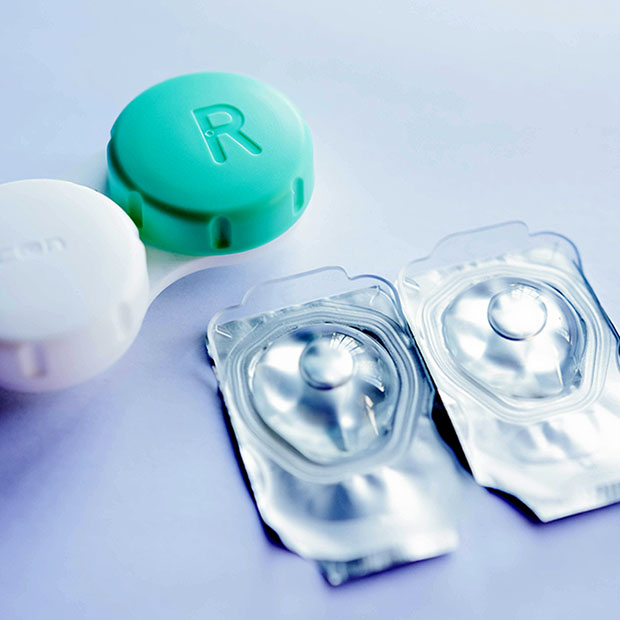The Different Types Of Contact Lenses

Compared to all the different frame styles and lens shapes of glasses, it might seem like contact lenses are much simpler.
However, there are actually many different types of contact lenses too, varying in shape, durability, and material, and we’ll be taking all of these variables into account when finding the right lenses for you.
Toric Versus Spherical Lenses
Just as glasses lenses will be shaped differently depending on the type of correction your vision needs, contacts are shaped differently too. Spherical contacts are shaped for treating myopia (nearsightedness), hyperopia (farsightedness), and presbyopia (age-related farsightedness), but this shape can’t do anything to fix an astigmatism. That’s where toric lenses come in. These are cylindrical lenses designed to correct the warp in the cornea, and they are kept in the correct position by gravity and blinking.
Daily Versus Extended Wear Lenses
Most contact lenses are wearable only during the day, and for the sake of our eyes’ health, we have to take them out again at night. Some are meant to be thrown away after a single day’s use, and some are meant to last multiple weeks. It is a terrible idea to try saving money on contact lenses by wearing them longer than what is recommended on the packaging and by the optometrist, because they can become contaminated over time, which puts your eyes at risk of infection.
Extended wear contacts are specifically designed to be so comfortable and gas-permeable that they are safe to wear overnight. New technology and materials have made extended wear contacts safer than they used to be, but even in FDA approved lenses, the risk of infection and other problems from leaving contacts in for days or even weeks at a time still exists.
Soft Versus Hard Lenses
The earliest contact lenses were incredibly thick and made of glass. Thankfully, we’ve come a long way since then, and the two most common options for lens materials are silicone hydrogels (soft) and plastic (hard). Both allow plenty of oxygen to reach the cornea, but each has different advantages. Soft lenses are more comfortable and stay in place better, while hard or rigid gas permeable lenses correct more vision problems, are easy to put on and clean, cover less of the eye, and last a comparatively long time.
We Can Help You Find Your Ideal Lenses
These are just a few of the different types of contact lenses, but there are also colored and tinted lenses and more! With all the different types of contact lenses available, it might seem difficult to know where to begin, especially if you are just switching over from glasses for the first time. We’d be happy to answer any questions you have about contact lenses and help you find the perfect type for you.